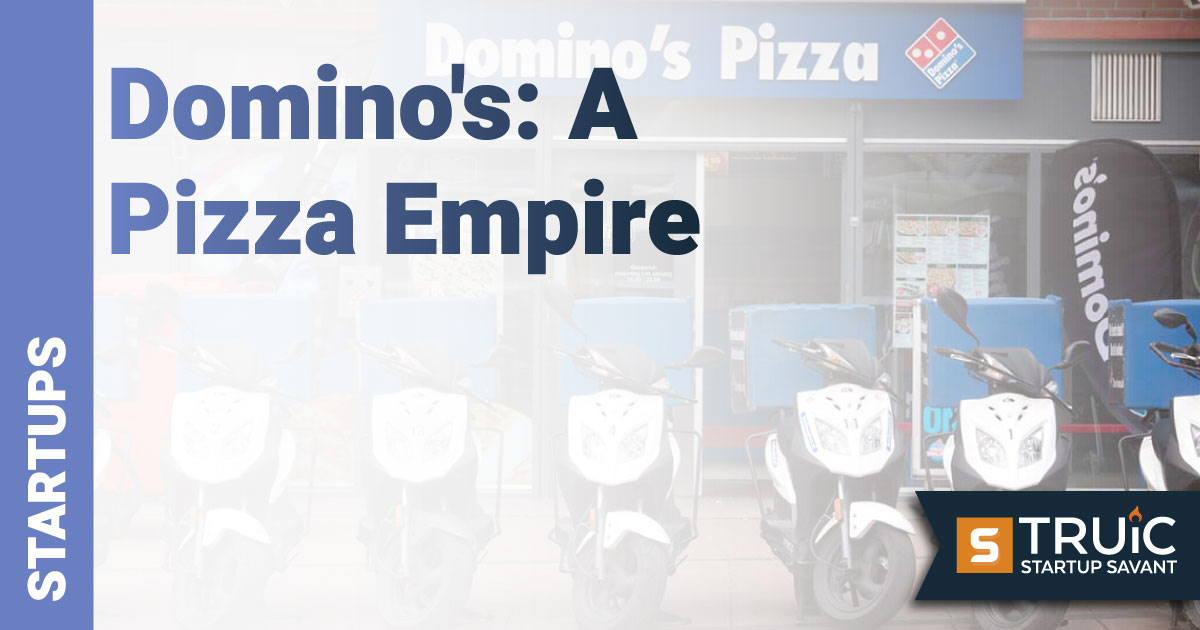Domino’s: A Pizza Empire
The Strategy Story Behind Domino’s Pizza

Last Updated: By TRUiC Team
With 6,355 stores in the United States alone, Domino's Pizza is by far one of the biggest names in pizza and the restaurant industry as a whole. Like most companies, though, Domino's came from a beginning that is much humbler than its current position — and the success that Domino's currently enjoys is thanks in no small part to an excellent business strategy.
To help you understand how the Domino's empire came to be, let’s take a look at the company's origin, the history that led up to Domino's current popularity, and the vital role that the company's business strategy has played along the way.
The Beginning
In order to discuss the origins of Domino's, we first need to take a look at how pizza became popular in the United States. Pizza was a dish that was invented in Italy sometime around the early nineteenth century. It wasn't until around a hundred years later, though, that pizza first appeared in the United States as large numbers of Italian immigrants began to move to the country. As US soldiers returned from being stationed in Italy following the end of WWII in 1945, the popularity of pizza started to spread to regions of the country beyond the Italian-American communities that first brought the dish to US soil.
This brings us to 1960, when brothers Tom and James Monaghan took over the operation of a small pizza restaurant in Ypsilanti, Michigan, called DomiNick's. The two purchased the restaurant for $900, but eight months later, James sold his half of the business in exchange for full ownership of a Volkswagen Beetle that the two brothers used for deliveries.
By 1965, Tom Monaghan had purchased two additional pizza restaurants and decided to rename the business “Domino's Pizza, Inc.” He designed a logo for the company that was a domino with three dots representing the three stores. Tom's initial plan was to add a dot to the logo for each new store that he purchased, but as the success of the chain took off, he quickly realized that this wasn't going to be possible.
In 1967, Domino's opened its first franchise location. Just one year later, in 1968, there were over 200 Domino's locations across the country. Tom Monaghan retained full ownership of the company until 1998, when he sold 93% of his equity to Bain Capital for around $1 billion.
Feeling inspired? Learn how to launch your company with our guide on How to Start a Startup.
Domino's Growth and Global Influence
At the time of this writing, Domino's has reached a valuation of a little over $25 billion, and the most recent reported quarterly revenue for the company was $1.34 billion. In terms of revenue, Domino's is currently the largest pizza chain in the world. With over 15,900 stores spread across 85 different countries, Domino’s has become a global brand.
When looking at the factors that have led to Domino's current dominance of the pizza market, there are several points of interest worth examining.
To start, Domino's was one of the first companies to bring the idea of fast pizza delivery into the mainstream. When the company was founded, most pizza restaurants were dine-in establishments, and pizza was not considered "fast food" in the way that burgers and fries were at the time. However, Domino's iconic "30 minutes or less" promise and commitment to swift delivery was key to bringing about the pizza delivery industry we know today and was equally key to the company's early success.
Another key to Domino's growth and global influence has been the company's franchising strategy. While certainly not the first restaurant company to employ the franchise model, Domino's did leverage it to maximum effect, rapidly expanding the chain across the country in a matter of years. Today, this structure remains a vital part of Domino's business model, with 81% of the company's revenue said to come from selling ingredients to both Domino's franchise owners and other pizza chains.
In addition to an innovative business model, innovative marketing has also played a key role in the success of Domino's. Over the years, the company has rolled out a number of unique and clever marketing campaigns, including the "Paving for Pizza" campaign in 2018, where Domino's promised to fund the fixing of potholes in city streets in order to prevent ruined pizzas and the most recent 2022 campaign where Domino's "tips" its customers in the form of a $3 coupon for "being their own delivery drivers" and ordering carryout. Domino's was also one of the first restaurants to embrace the idea of digital ordering, and the company currently allows its customers to order pizza via text, Twitter, Facebook, and Slack (just to name a few).
While few can deny the deliciousness of a Domino's pizza, it has been much more than a high-quality product that has made Domino's the global success it is today. One overarching theme when you look at Domino's strategy story is the company's commitment to innovation, both in its marketing and its business model. More than anything else, it’s this forward-thinking innovation that has grown Domino's from a single restaurant in Michigan to a globally recognized brand.
Next steps: Learn more business strategies or get inspired with our list of the top startups to watch!


